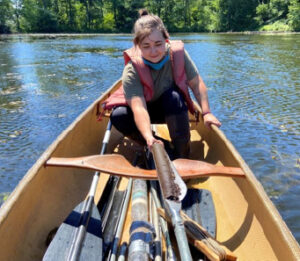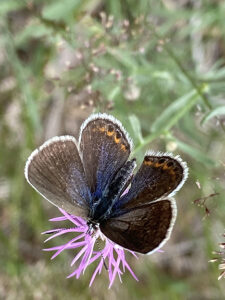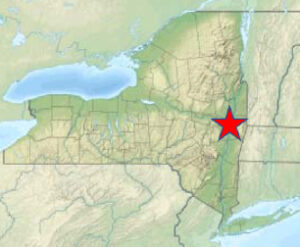
The Age and Evolution of the Albany Pine Bush (Albany, NY)
Expedition Dates: July 2020
Expedition Field Team Members:
J. Curt Stager, Climate Change Institute, University of Maine, and Paul Smith’s College; Skylar Murphy, Environmental Science, Paul Smith’s College
Expedition Funding: Draper-Lussi Endowed Chair Fund
Field Expedition Location: Albany Pine Bush, Albany, NY
The Albany Pine Bush is an island of biodiversity and unique ecological heritage in an urban sea, and those tasked with managing and protecting the Albany Pine Bush Preserve have used controlled burns, invasive species eradication, and other tools to maintain the ecosystem successfully thus far. However, a deep time perspective to inform those efforts and support public outreach regarding the pine bush has thus far been lacking. The main goals of this study were to (1) explore the nature of local geological deposits that might contain long-term records of vegetation and fire frequency in the pine bush, and (2) use radiometric dating to provide the first age estimates for the ecosystem.
Fieldwork centered on a coring campaign in 2020 in which a wetland in the heart of the Albany Pine Bush Preserve was sampled. Another potential coring site was identified as well, a hitherto unexamined pond (Stump Pond) on private land on the heavily settled northern margin of the original pine bush region. These represent, to our knowledge, the only remaining geological deposits that are likely to contain long paleo records of the ecosystem, the others having been destroyed by development.

Project Goals:
Goals for the Albany Pine Bush Project are:
- Investigate the thickness and nature of sediment deposits in the Pine Bush Preserve wetland and in Stump Pond.
- Conduct preliminary pollen analysis of the sediments to determine whether pine and oak pollen are both present (absence of one or both from the pollen assemblages would indicate the absence of classic pine bush vegetation).
- Determine when pine and oak first appeared in the region in order to provide a preliminary age range for the pine bush ecosystem.
- Assess the potential of charcoal analysis for reconstructing fire history in the pine bush.

Findings:
The wetland deposits are roughly 1 meter thick and represent the last ca. 6600 years. This represents the first documentation of the age of the wetland, and shows that it is much younger than the sandy postglacial Lake Albany deposits upon which the pine bush vegetation developed.
The Stump Pond deposits are roughly 1 meter thick, but an additional ca. 0.5 m of younger sediments are thought to have been removed by dredging. The basal sediment was deposited ca.12,700 years ago. This represents the first documentation of the age of Stump Pond and helps to clarify the date at which this area was exposed by the drainage of Lake Albany.
Oak and pine pollen are abundant throughout the wetland core, which suggests a minimum age of 6500 years for the pine bush ecosystem. Oak pollen is absent from the Stump Pond core, which suggests that the maximum age of classic pine bush vegetation is ca. 10,500 years.
Charcoal is abundant in both deposits and could provide insights into the frequency of past fires and the role of fire in the evolution of the pine bush evcosystem.
Media Outreach:
Webinar sponsored by Albany Pine Bush Preserve (March 25, 2021):
https://www.facebook.com/events/838020507056603/



